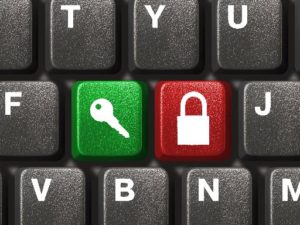 Very few of us fall for the old Nigerian prince email scam these days, and even fewer will click on a pop-up ad inviting us to “win $1 million” by playing a simple game. We’ve come a long way in terms of learning the do’s and don’ts of cyber security, but that doesn’t mean our days of online vulnerability are completely behind us.
Very few of us fall for the old Nigerian prince email scam these days, and even fewer will click on a pop-up ad inviting us to “win $1 million” by playing a simple game. We’ve come a long way in terms of learning the do’s and don’ts of cyber security, but that doesn’t mean our days of online vulnerability are completely behind us.
Over 6 million internet users were attacked by malware in 2015. As we become savvier to the tricks they’ve pulled in the past, hackers begin to up their game by catching us where we least expect it. Although we’d like to assume that all of those users who were attacked in 2015 were prime targets, or perhaps people who are a bit less tech savvy than the rest of us, the fact is that many of them were normal internet browsers like you and me who actually know a thing or two about online safety.
There are additional risks these days, and even some of the tech-savviest internet users create cyber security risks without knowing it. To help avoid online attacks, here is a list of some of the top cyber security mistakes internet users are making in 2016.
1. Storing passwords in a browser
According to a recent survey, 59 percent of millennials store passwords in their browsers on a regular basis. It may be convenient to easily access your most-used accounts without typing in a username and password each time, but it also puts you at serious risk for an online attack.
The first step in keeping your passwords safe is to create a strong password that uses numbers, symbols, and both capital and lower case letters. You’ll also want to use a different password for each site. Once you’ve got a solid password for each of your online accounts, avoid storing them in your browser! If you’re like me and tend to forget things easily, try using a secure password storage system or software such as “KeePass, LastPass, Dashlane, 1 Password, RoboForm” to keep track of your logins.
2. Purchasing locked devices
Prices for phones, laptops, and tablets can be high these days. The good news is that the market for selling used electronics online is getting bigger and more easily accessible. The bad news is that scammers have begun to use this second-hand marketplace as a means for duping consumers into paying more for devices that they’ve already paid for.
If you’re looking into purchasing a used device online, it will be important to ensure that it is unlocked. There will be different processes for checking iOS and Android devices.
For iOS devices, you’ll also need to ensure that the former user’s iCloud account is taken off of your device. If it’s not, you’ll need to take the necessary steps to remove their account from your device before they have a chance to lock the phone.
3. Connecting to unencrypted Wi-Fi networks
The ability to hop onto free Wi-Fi at your local coffee shop or the university library sure does make working on projects or simply browsing much easier on the go. The problem is, hackers are starting to take advantage of society’s reliance upon public Wi-Fi connections.
Do your best to avoid Wi-Fi connections that don’t have password protection when you’re out and about. Checking for the password of the official Wi-Fi at your location of choice will also help you avoid logging into a network set up by hackers looking to view your online activity.
To be extra secure on public Wi-Fi, stick to HTTPS sites while you’re browsing and look into using a virtual private network. It’s also best to avoid installing new software while using a public Wi-Fi network.
4. Ignoring security software updates
We’re all guilty of clicking out of software update notifications when they pop up on our screens. Although taking a few minutes to update your device’s security software may seem like a burden in the middle of a big project, it will be worth your while when it prevents an online attacker from installing malware on your device.
Be sure to install security software updates each time you receive a notification. If you’re connected to a public Wi-Fi network or really don’t have the time to do it when the notification pops up, set a reminder to install the new software later. The longer your device runs without up-to-speed security software, the more vulnerable you become to cyber security breaches.
5. Clicking on links in emails
Most of us receive emails from banks, utility companies, and other organizations with links to view account activity online. Although these are typically from a trusted source, you can never be too sure. A well-written email from a seemingly credible source could send you a link that installs malware on your device when clicked.
Next time you receive a link in an email, leave your email account and look for the actual site in your browser to avoid clicking on a malicious link. For example, even if the link goes to your bank of choice, it’s best to leave your account and log in through a trusted portal.
Have you been making any of these common cyber security errors? If so, it’s about time to take action and implement the provided tips to protect yourself from online attacks.
Share your experiences in the comment section.







